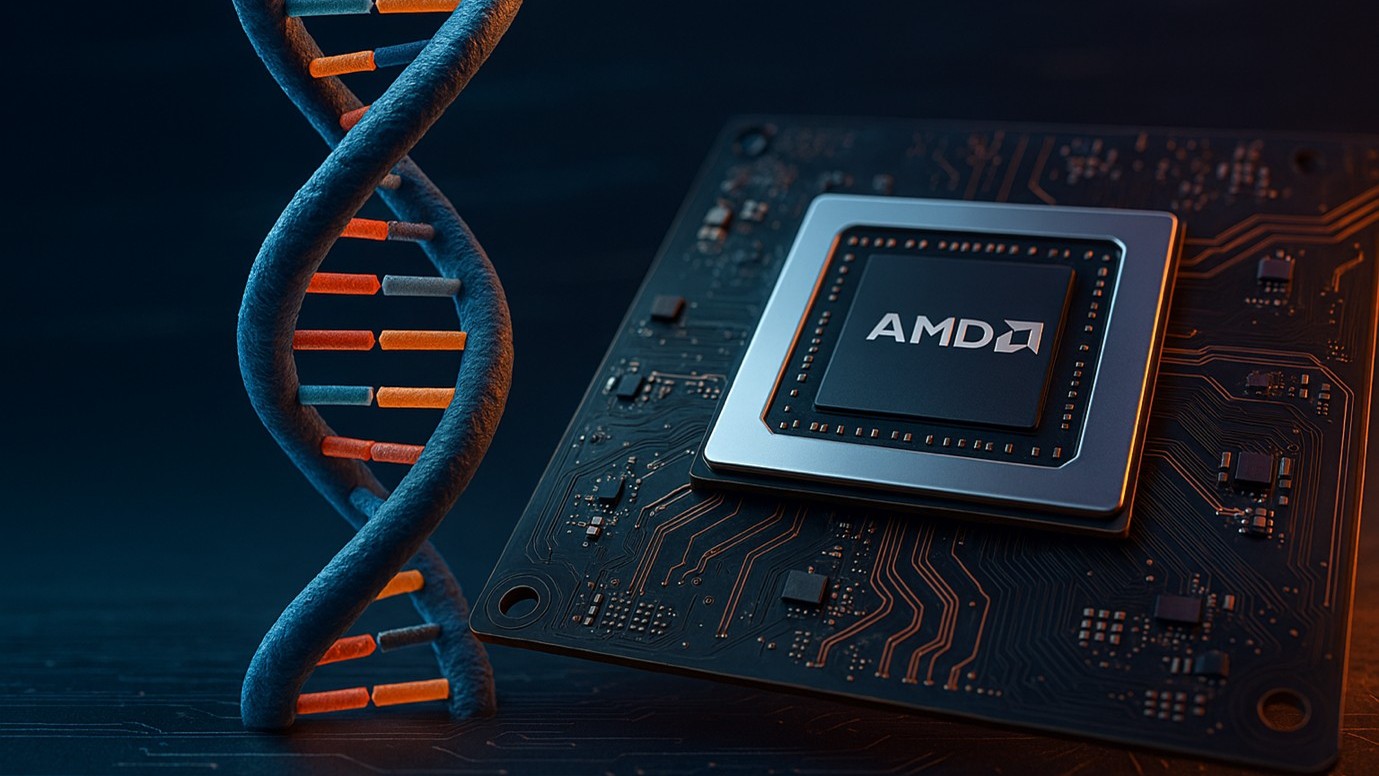ORBIT-2: AMD and ORNL Advancing Earth System Intelligence at Exascale
Nov 10, 2025

Figure 1: Left: Input Image at 28km resolution. Right: ORBIT-2 downscaled prediction at 7km resolution (Image Courtesy of ORNL).
Through a deep co-innovation partnership, AMD and Oak Ridge National Laboratory (ORNL) are architecting next-generation AI systems tailored for scientific workloads, integrating advanced GPU hardware, scalable software frameworks, and domain-specific optimizations to accelerate discovery across earth systems intelligence, molecular science, and other science applications. The second iteration of “Oak Ridge Base AI foundation model for Earth System Predictability” or “ORBIT-2” is a groundbreaking AI foundation model developed by ORNL in collaboration with AMD, designed to perform global, hyper-resolution weather downscaling at an unprecedented 0.9 km resolution. By combining a novel Vision Transformer architecture with scalable algorithms, ORBIT-2 represents a transformative leap in Earth system modeling and high-performance computing.
In a landmark achievement, ORBIT-2 has been named a finalist for both the Gordon Bell Prize and Best Paper at Supercomputing 2025 (Xiao Wang, 2025), two of the most prestigious honors in the HPC community. Widely regarded as the “Nobel Prize of supercomputing”, the Gordon Bell Prize recognizes the most innovative and impactful achievements in computational science – honoring breakthroughs that demonstrate exceptional performance, scalability, and scientific advancement on the world’s most powerful supercomputers. ORBIT-2’s selection as a finalist for the award underscores its role in shaping the future of exascale computing and AI-driven Earth system research.
Science Breakthroughs: From Simulation to Earth-System Intelligence
ORBIT-2 represents a paradigm shift in Earth system intelligence, moving beyond traditional simulation-based approaches to a scalable, AI-driven foundation model that learns from data. It generalizes across regions and variables, and delivers hyper-resolution, physically consistent Earth system projections of temperature and precipitation at ultra fine-grained 0.9 km resolution—globally. This capability is critical for:
- Disaster preparedness: Predicting extreme weather events with fine-grained spatial detail.
- Infrastructure planning: Informing resilient design in flood-prone or heat-vulnerable regions.
- Situational awareness: Enabling faster response with high-fidelity, near real-time insights.
The implications are profound. The high-fidelity projections of ORBIT-2 can be deployed even on edge devices—reducing inference time to milliseconds. This democratizes access to weather intelligence, empowering researchers, policymakers, and industries worldwide to make informed decisions in the face of extreme weather.
Intelligence at Scale: The Transformative Algorithms of ORBIT-2
At the heart of ORBIT-2 are two foundational innovations that overcome long-standing challenges in AI-based Earth system modeling:
- Reslim Architecture: A lightweight, residual Vision Transformer (ViT) that eliminates costly up-sampling. It operates directly on compressed inputs, reducing sequence length and computational cost by over 660x compared to standard ViTs—without compromising accuracy.
- TILES Algorithm: A tile-wise sequence scaling method that reduces ViT self-attention complexity from quadratic to linear. TILES enables efficient parallelism across GPUs, supporting sequences up to 4.2 billion tokens—over 22,000x longer than previous ViT models.
Together, they overcome long-standing barriers in AI-based Earth system modeling—namely, the quadratic complexity of self-attention and the uncertainty of inverse downscaling.
Accelerating Discovery: How AMD Fuels the AI-for-Science Revolution
AMD Instinct™ MI250X GPUs and ROCm™ software stack were instrumental in the success of ORBIT-2. The Frontier exascale supercomputer, powered by AMD EPYC™ CPUs and MI250X accelerators, enabled the massive parallelism required for ORBIT-2’s hybrid model and sequence scaling. The project leveraged PyTorch with ROCm 6.3.1, FlashAttention, and advanced parallelism strategies including Fully Sharded Data Parallelism (FSDP) and Tensor Model Parallelism. AMD support was critical in ORNL achieving the 74–98% strong scaling efficiency on Frontier that made ORBIT-2’s exascale performance possible.
ORBIT-2 scales to 10 billion parameters and processes sequences up to 4.2 billion tokens. In benchmark evaluations, ORNL found that ORBIT-2 achieved R² scores of 0.999 for temperature and 0.986 for global precipitation, setting new standards for accuracy in weather downscaling.
The AMD Commitment to AI innovation-for-Good
ORBIT-2 offers a glimpse into the future of AI-for-Science—where exascale computing and intelligent models converge to deliver actionable insights at planetary scale. This work not only advances the state of the art in Earth system modeling but also sets a precedent for scalable AI applications across domains like genomics, fluid dynamics, and astrophysics.
ORBIT-2 exemplifies the broader vision of AMD: harnessing AI and HPC to solve humanity’s greatest challenges. From Earth-system modeling to energy systems and beyond, AMD is committed to:
- Scalable AI foundation models for scientific discovery.
- Open software ecosystems like ROCm for reproducible research.
- Sustainable computing through energy-efficient architectures .
As a finalist for both the Gordon Bell Prize and Best Paper at Supercomputing 2025, ORBIT-2 stands as a beacon of what’s possible when AI, HPC, and scientific ambition converge.
References
Xiao Wang, Jong-Youl Choi, Takuya Kurihaya, Isaac Lyngaas, Hong-Jun Yoon, Nasik Muhammad Nafi, Aristeidis Tsaris, Ashwin M. Aji, Maliha Hossain, Ming Fan, Mohamed Wahib, Dali Wang, Peter Thornton, Moetasim Ashfaq, Prasanna Balaprakash, Dan Lu. (2025). ORBIT-2: Scaling Exascale Vision Foundation Models for Weather and Climate Downscaling. SC25 Conference Proceedings. ACM Gordon Bell Prize Finalist. St. Louis, Missouri. Link to paper (arXiv) [arxiv.org]










